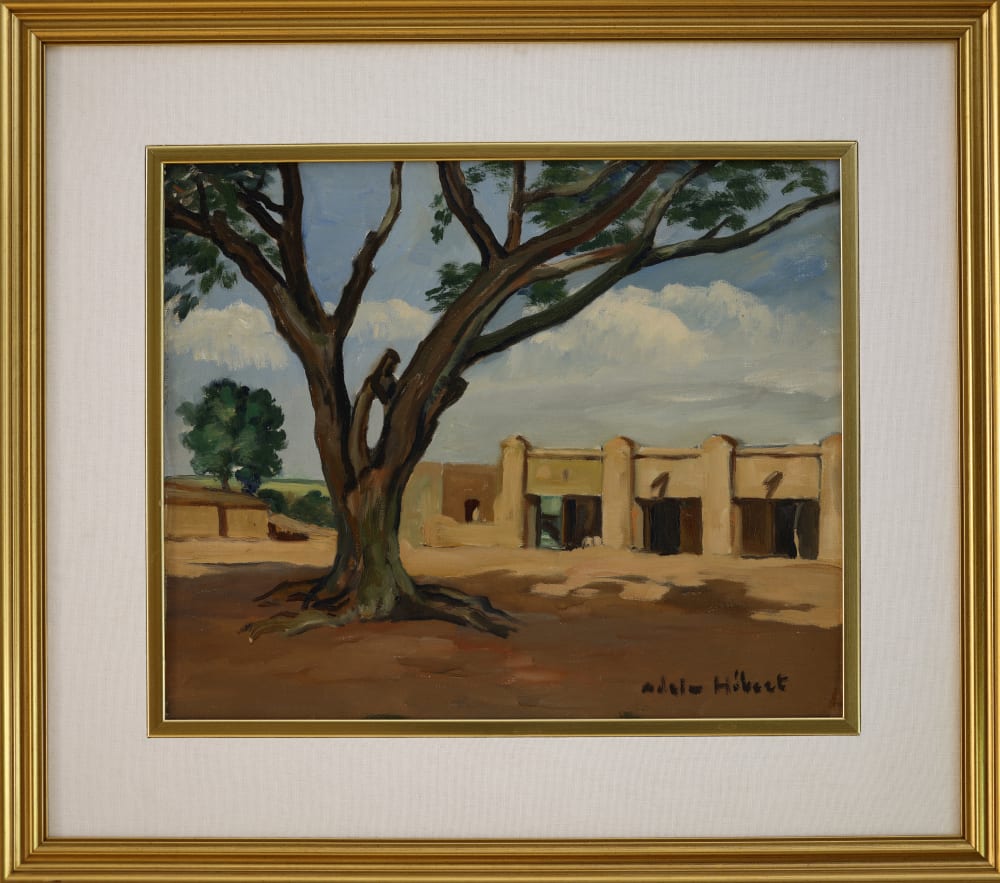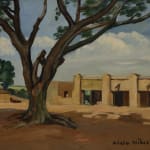Adrien Hebert Canadian, 1890-1967
Further images
Maison derrière l'arbre, painted by Adrien Hebert, captures a rural or semi-arid landscape dominated by a large, robust tree in the foreground. The tree's expansive branches stretch across the canvas, providing shade and structure to the scene. Its trunk shows signs of age and resilience, and the tree appears to be a silent witness to the environment it oversees.
Behind this central figure of the tree lies a series of simple, one-story buildings with flat roofs, characteristic of traditional architecture possibly found in warmer climates. The buildings are rendered with minimal detail, emphasizing their functional form over decorative aspects. The uniformity of their construction and the open doorways suggest a communal or utilitarian purpose, perhaps as part of a rural settlement or outpost.
The color palette is earthy, with warm browns and tans used for the ground and structures, while the tree and the scattered vegetation are depicted with various shades of green. The sky is painted with broad, confident strokes of blue and white, suggesting a clear day with fluffy clouds sporadically dotting the horizon.
Hebert’s technique is straightforward, with solid areas of color and a clear delineation of forms, giving the painting a calm, grounded feel. This work seems to celebrate the simplicity of rural life, with nature and human habitation coexisting quietly. The title Maison derrière l'arbre (House Behind the Tree) suggests a narrative or symbolic significance to the relationship between the tree and the building, inviting the viewer to ponder the connection between the two.






